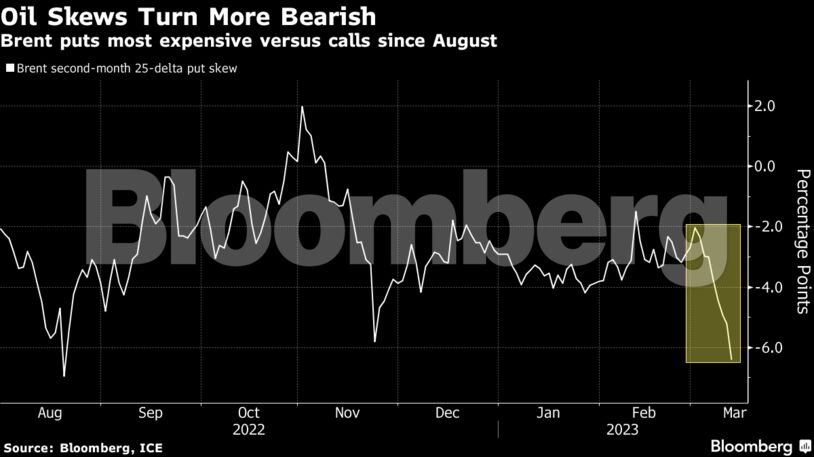Brent’s nearby put skew — a gauge of how much more traders are willing to pay for contracts that profit from a price decline rather than a rally — rose to the highest level since mid-August on Monday amid the market turmoil.
“A wave of risk aversion swept across the markets amid fears of a broader financial crisis,” said Carsten Menke, an analyst at Julius Baer Group Ltd. Nonetheless, “we see the developments as more noise than news, which should not have any meaningful medium- to longer-term impact on most commodity markets.”
Crude has had a bumpy year so far as traders juggle concerns over a global economic slowdown and optimism around China’s demand rebound after the nation ended Covid Zero. A measure of volatility for WTI skyrocketed this week.
OPEC is scheduled to issue its monthly market report later Tuesday, and the International Energy Agency will follow with its release on Wednesday, providing on snapshot on the outlook for supply and demand.
Prices:
WTI for April delivery fell 2.3% to $73.05 a barrel at 9:46 a.m. in London. Futures are trading near the lowest in more than a month.
Brent for May settlement dropped 2% to $79.18 a barrel.
Share This:




 CDN NEWS |
CDN NEWS |  US NEWS
US NEWS 



























